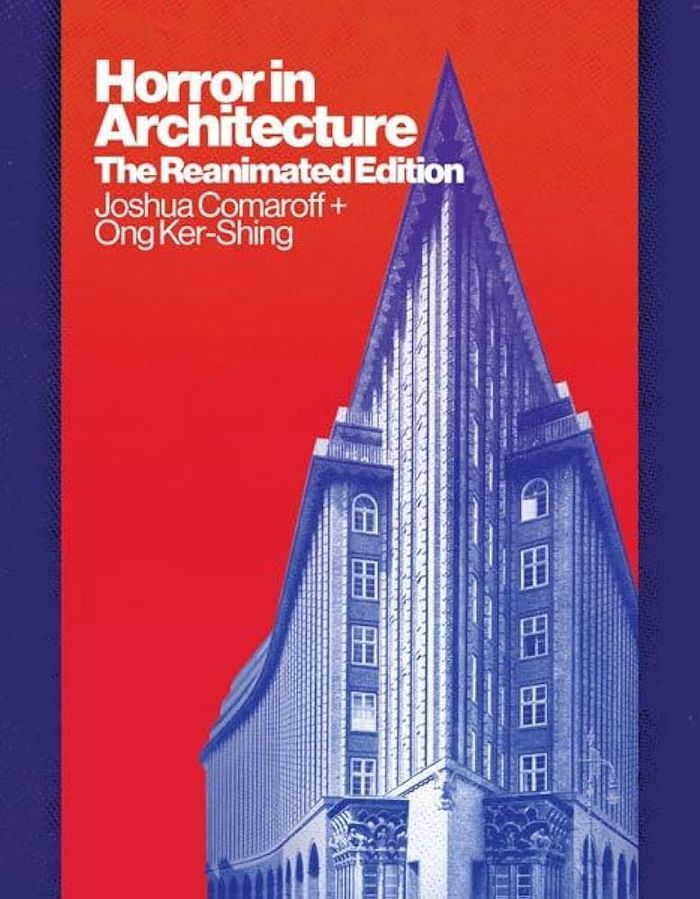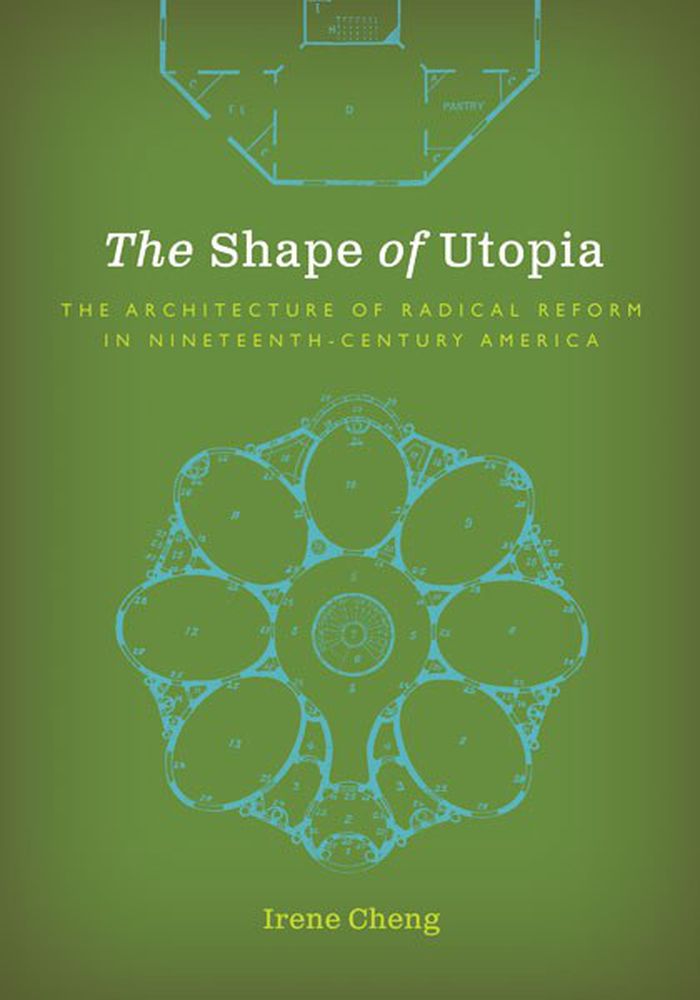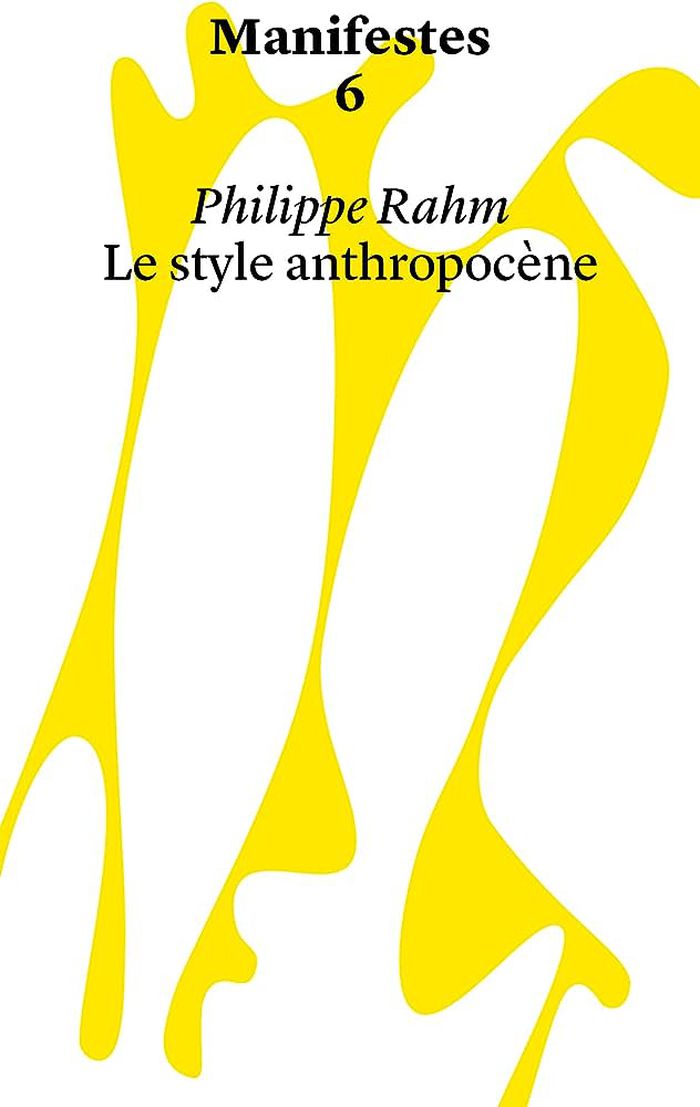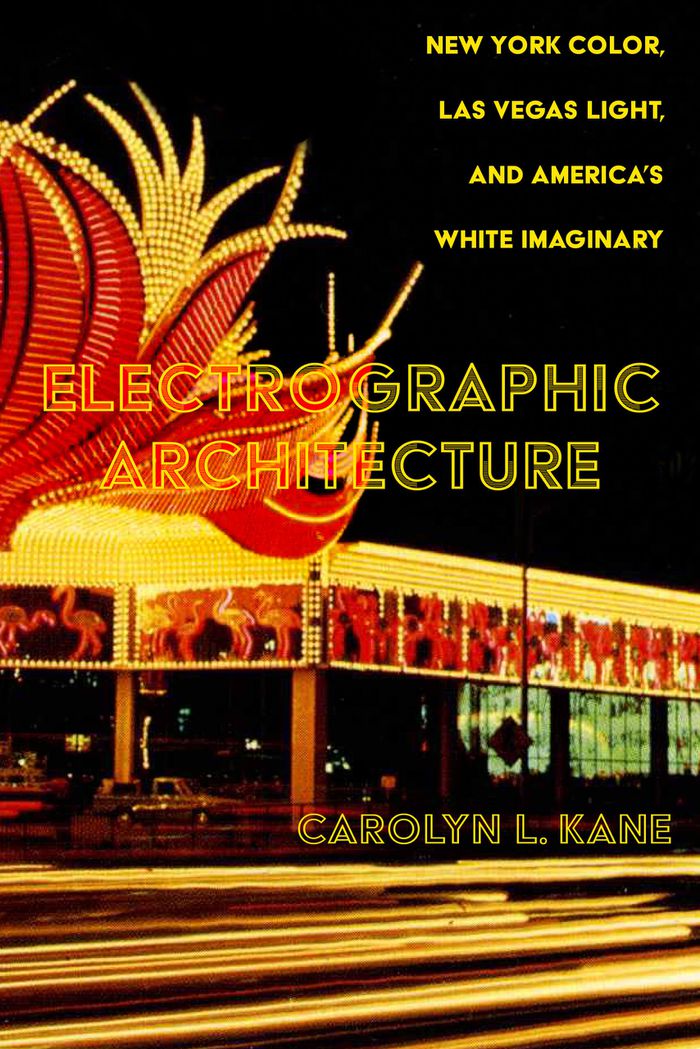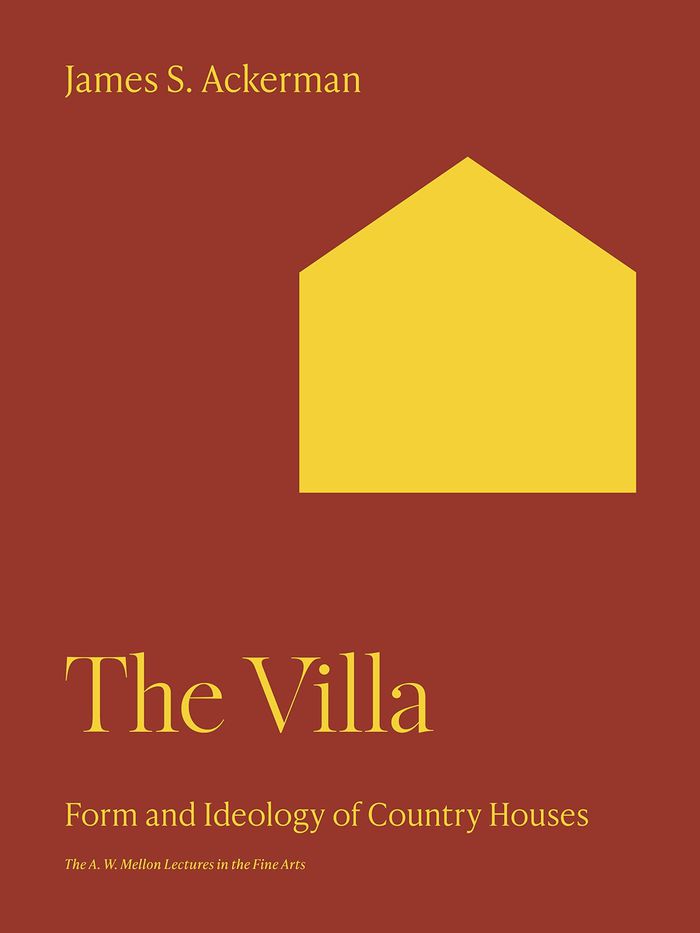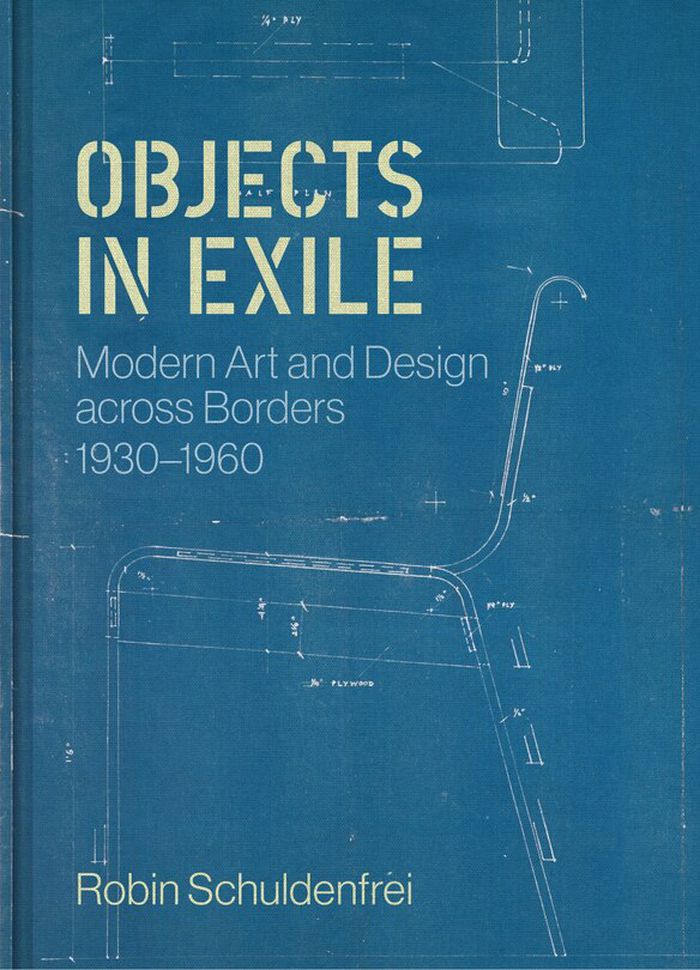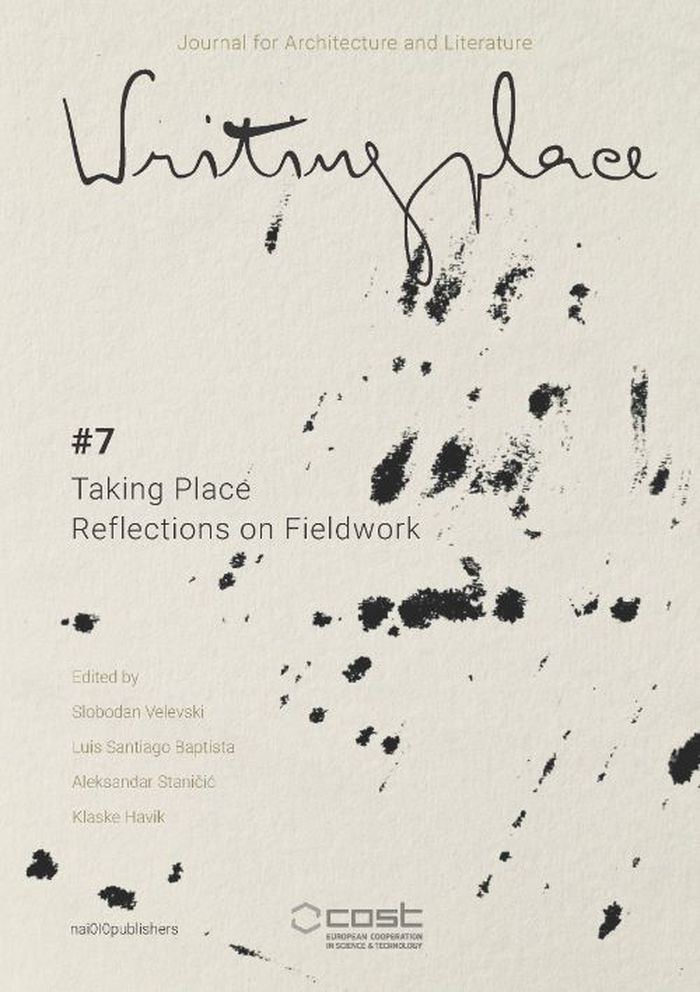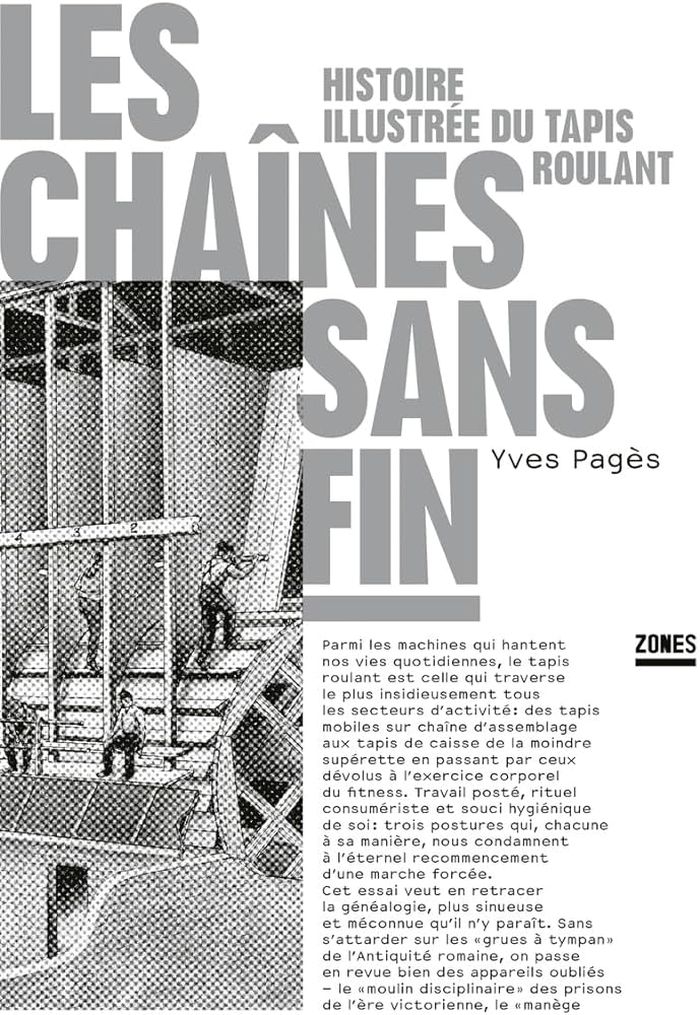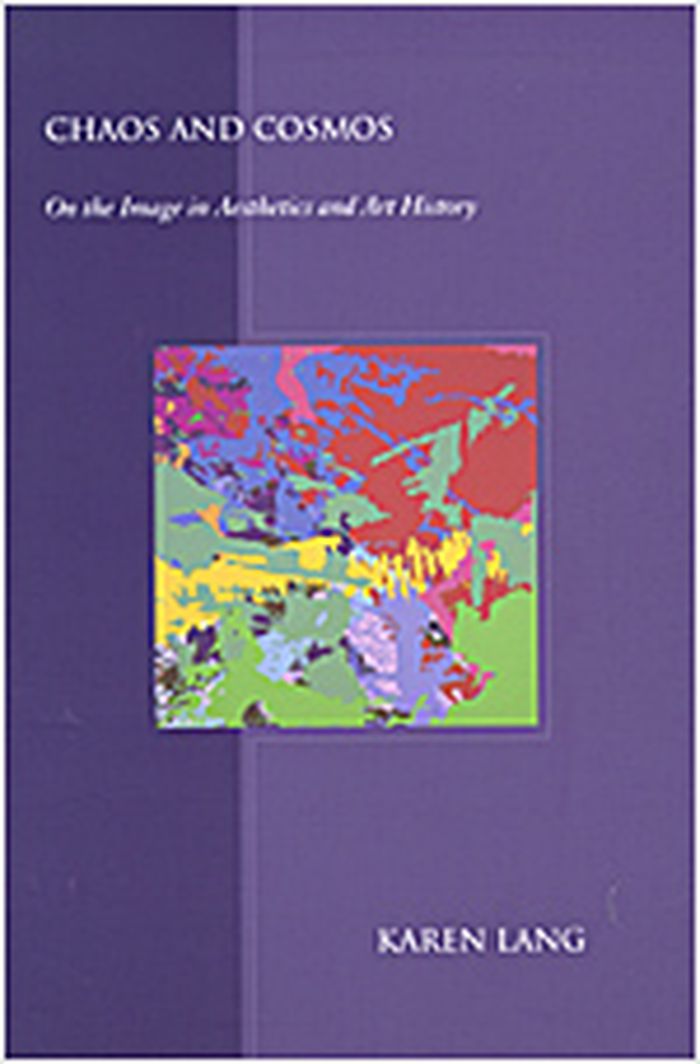$34.99
(disponible sur commande)
Résumé:
"Horror in architecture" presents an unflinching look at how horror genre tropes manifest in the built environment. Spanning the realms of art, design, literature, and film, this newly revised and expanded edition compiles examples from all areas of popular culture to form a visual anthology of the architectural uncanny. Rooted in the Romantic and Gothic treatment of(...)
Horror in architecture: The reanimated edition
Actions:
Prix:
$34.99
(disponible sur commande)
Résumé:
"Horror in architecture" presents an unflinching look at how horror genre tropes manifest in the built environment. Spanning the realms of art, design, literature, and film, this newly revised and expanded edition compiles examples from all areas of popular culture to form a visual anthology of the architectural uncanny. Rooted in the Romantic and Gothic treatment of horror as a serious aesthetic category, "Horror in architecture" establishes incisive links between contemporary horror media and its parallel traits found in various architectural designs. Through chapters dedicated to distorted and monstrous buildings, abandoned spaces, extremes of scale, and other structural peculiarities, and featuring new essays on insurgent natures, blobs, and architectural puppets, this volume brings together diverse architectural anomalies and shows how their unsettling effects deepen our fascination with the unreal. Intended for both horror fans and students of visual culture, Horror in Architecture turns a unique lens on the relationship between the human body and the artificial landscapes it inhabits. Extensively illustrated with photographs, film stills, and diagrams, this book retrieves horror from the cultural fringes and demonstrates how its attributes permeate the modern condition and the material world.
Théorie de l’architecture
$48.99
(disponible sur commande)
Résumé:
''The shape of utopia'' documents a pivotal moment in American history when ordinary people ardently believed in the potential to reshape society. Highlighting the inherent political capacity of architecture, Irene Cheng showcases how visionary utopian planners in the mid-nineteenth century used their blueprints as persuasive visual rhetoric that could mobilize others to(...)
The shape of utopia: The architecture of radical reform in nineteenth-century America
Actions:
Prix:
$48.99
(disponible sur commande)
Résumé:
''The shape of utopia'' documents a pivotal moment in American history when ordinary people ardently believed in the potential to reshape society. Highlighting the inherent political capacity of architecture, Irene Cheng showcases how visionary utopian planners in the mid-nineteenth century used their blueprints as persuasive visual rhetoric that could mobilize others to share in their aspirations for a better world.
Théorie de l’architecture
$29.95
(disponible en magasin)
Résumé:
Ce manifeste, à la croisée de l’architecture, de l’esthétique et de l’ingénierie, appelle à réactiver le sens pratique de la décoration d'intérieur, tel qu’il existait avant le XXe siècle. Les fonctions climatiques des tapis, tapisseries, rideaux, miroirs ou paravents ont été oubliées avec la modernité. Ces objets ont été réduits à leur seule dimension symbolique par(...)
Manifestes 6 : Le style anthropocene
Actions:
Prix:
$29.95
(disponible en magasin)
Résumé:
Ce manifeste, à la croisée de l’architecture, de l’esthétique et de l’ingénierie, appelle à réactiver le sens pratique de la décoration d'intérieur, tel qu’il existait avant le XXe siècle. Les fonctions climatiques des tapis, tapisseries, rideaux, miroirs ou paravents ont été oubliées avec la modernité. Ces objets ont été réduits à leur seule dimension symbolique par l’efficacité des dispositifs énergivores de chauffage ou de climatisation. La nécessité de réduire aujourd’hui les émissions de CO2 et l’énergie consommée, ainsi que la lutte contre les canicules appellent à reprendre en compte la valeur thermique de l’art décoratif du passé, à repenser les modes d’aménagement intérieur, leurs configurations spatiales, formelles et matérielles dans une nouvelle optique de performance climatique : une esthétique décorative propre au XXIe siècle que nous proposons de nommer le « style anthropocène ».
Théorie de l’architecture
$39.95
(disponible en magasin)
Résumé:
Bridging histories of technology, media studies, and aesthetics, ''Electrographic architecture'' forges a critical narrative of the ways in which illuminated light and color have played key roles in the formation of America's white imaginary. Carolyn L. Kane charts the rise of the country's urban advertisements, light empires, and neoclassical buildings in the early(...)
Electrographic architecture: New York color, Las Vegas light, and America's white imaginary
Actions:
Prix:
$39.95
(disponible en magasin)
Résumé:
Bridging histories of technology, media studies, and aesthetics, ''Electrographic architecture'' forges a critical narrative of the ways in which illuminated light and color have played key roles in the formation of America's white imaginary. Carolyn L. Kane charts the rise of the country's urban advertisements, light empires, and neoclassical buildings in the early twentieth century; the midcentury construction of polychromatic electrographic spectacles; and their eclipse by informatically intense, invisible algorithms at the dawn of the new millennium. Drawing on archival research, interviews, and visual analysis, Electrographic Architecture shows how the development of America's electrographic surround runs parallel to a new paradigm of power, property, and possession.
Théorie de l’architecture
$55.00
(disponible sur commande)
Résumé:
In ''The Villa'', James Ackerman explores villa building in the West from ancient Rome to twentieth-century France and America. In this wide-ranging book, he illuminates such topics as the early villas of the Medici, the rise of the Palladian villa in England, and the modern villas of Frank Lloyd Wright and Le Corbusier. Ackerman uses the phenomenon of the 'country place'(...)
The Villa: Form and ideology of country houses
Actions:
Prix:
$55.00
(disponible sur commande)
Résumé:
In ''The Villa'', James Ackerman explores villa building in the West from ancient Rome to twentieth-century France and America. In this wide-ranging book, he illuminates such topics as the early villas of the Medici, the rise of the Palladian villa in England, and the modern villas of Frank Lloyd Wright and Le Corbusier. Ackerman uses the phenomenon of the 'country place' as a focus for examining the relationships between urban and rural life, between building and the natural environment, and between architectural design and social, cultural, economic, and political forces. ''The villa,'' he reminds us, ''accommodates a fantasy which is impervious to reality.'' As city dwellers idealized country life, the villa, unlike the farmhouse, became associated with pleasure and asserted its modernity and status as a product of the architect’s imagination.
Théorie de l’architecture
$87.95
(disponible sur commande)
Résumé:
Shedding critical light on how the pressures of dislocation irrevocably altered the course of modernism, "Objects in exile" shows how artists and designers, forced into exile by circumstances beyond their control, changed in unexpected ways to meet the needs and contexts of an uncertain world.
Objects in exile: modern art and design across borders 1930-1960
Actions:
Prix:
$87.95
(disponible sur commande)
Résumé:
Shedding critical light on how the pressures of dislocation irrevocably altered the course of modernism, "Objects in exile" shows how artists and designers, forced into exile by circumstances beyond their control, changed in unexpected ways to meet the needs and contexts of an uncertain world.
Théorie de l’architecture
Writingplace journal for architecture and literature 7: Taking place, reflections on fieldwork
$58.00
(disponible en magasin)
Résumé:
The magazine 'Writingplace Journal for Architecture and Literature'' is an international, open-access, peer-reviewed journal on architecture and literature. This journal is a vehicle for the Writingplace platform to continue its exploration of the productive relationship between architecture and literature. This issue ''Taking Place'', brings to the fore a number of(...)
Théorie de l’architecture
mars 2024
Writingplace journal for architecture and literature 7: Taking place, reflections on fieldwork
Actions:
Prix:
$58.00
(disponible en magasin)
Résumé:
The magazine 'Writingplace Journal for Architecture and Literature'' is an international, open-access, peer-reviewed journal on architecture and literature. This journal is a vehicle for the Writingplace platform to continue its exploration of the productive relationship between architecture and literature. This issue ''Taking Place'', brings to the fore a number of reflections on fieldwork that recently took place in urban environments, exploring the moment when reflection turns into action.
Théorie de l’architecture
$30.95
(disponible en magasin)
Résumé:
Enquête sur l'histoire du tapis roulant, machine ayant investi tous les domaines du quotidien, des chaînes d'assemblage en usine aux tapis de caisse, en passant par les tapis de course. Héritier des grues à tympan antiques, du manège à plan incliné ou encore des moulins disciplinaires des prisons victoriennes, ce dispositif est considéré par l'auteur comme un symbole du(...)
Les chaînes sans fin: histoire illustrée du tapis roulant
Actions:
Prix:
$30.95
(disponible en magasin)
Résumé:
Enquête sur l'histoire du tapis roulant, machine ayant investi tous les domaines du quotidien, des chaînes d'assemblage en usine aux tapis de caisse, en passant par les tapis de course. Héritier des grues à tympan antiques, du manège à plan incliné ou encore des moulins disciplinaires des prisons victoriennes, ce dispositif est considéré par l'auteur comme un symbole du mythe progressiste.
Théorie de l’architecture
livres
Cartographic cinema
$31.50
(disponible sur commande)
Résumé:
Cartography and cinema are what might be called locational machinery. Maps and movies tell their viewers where they are situated, what they are doing, and, to a strong degree, who they are. In this work,scholar Tom Conley establishes the ideological power of maps in classic, contemporary, and avant-garde cinema to shape the imaginary and mediated relations we hold with(...)
Cartographic cinema
Actions:
Prix:
$31.50
(disponible sur commande)
Résumé:
Cartography and cinema are what might be called locational machinery. Maps and movies tell their viewers where they are situated, what they are doing, and, to a strong degree, who they are. In this work,scholar Tom Conley establishes the ideological power of maps in classic, contemporary, and avant-garde cinema to shape the imaginary and mediated relations we hold with the world. "Cartographic cinema" examines the affinities of maps and movies through comparative theory and close analysis of films from the silent era to the French New Wave to Hollywood blockbusters. In doing so, Conley reveals that most of the movies we see contain maps of various kinds and almost invariably constitute a projective apparatus similar to cartography. In addition, he demonstrates that spatial signs in film foster a critical relation with the prevailing narrative and mimetic registers of cinema. Conley convincingly argues that the very act of watching films, and cinema itself, is actually a form of cartography. Unlike its function in an atlas, a map in a movie often causes the spectator to entertain broader questions—not only about cinema but also of the nature of space and being.
livres
décembre 2006, Minneapolis, London
Théorie de l’architecture
$31.50
(disponible sur commande)
Résumé:
In "Chaos and cosmos", Karen Lang addresses the power of art to resist the pressures of the transcendental vantage point-history. Uncovering the intellectual and cultural richness of the early years of academic art history in Germany -the period from the 1880s to 1940 - she explores various attempts within art history to transform aesthetic phenomena -chaos- into the(...)
Chaos in cosmos : on the image in aesthetics and art history
Actions:
Prix:
$31.50
(disponible sur commande)
Résumé:
In "Chaos and cosmos", Karen Lang addresses the power of art to resist the pressures of the transcendental vantage point-history. Uncovering the intellectual and cultural richness of the early years of academic art history in Germany -the period from the 1880s to 1940 - she explores various attempts within art history to transform aesthetic phenomena -chaos- into the cosmos of a systematic, unified field of inquiry. Lang starts by examining Panofsky's approach to aesthetic phenomena in his early theoretical essays alongside Ernst Cassirer's contemporaneous publications on the substance and function of scientific concepts (and on Einstein's theory of relativity). She then turns to the subject of aesthetic judgment through a rereading of Kantian subjectivity and Kant's uneasy legacy in art history. From here, Lang considers the different organizing theories of symbolic form proposed by Aby Warburg and Cassirer, as well as Goethe's inspiration for both; Alois Riegl's notion of age value and Walter Benjamin's conceptions of the aura; concluding with an extended examination of objectivity and the figure of the art connoisseur. Illustrated with works of art from the Enlightenment to the present day, this book illuminates an intellectual legacy that has profoundly shaped the study of the history of art in ways that have, until now, been largely unacknowledged. Addressing the interplay of chaos and cosmos in terms of history, art history, philosophy, and epistemology, Lang traces shifts in point of view in art history and the way these shifts change aesthetic objects into historical objects, and even objects of knowledge.
Théorie de l’architecture
